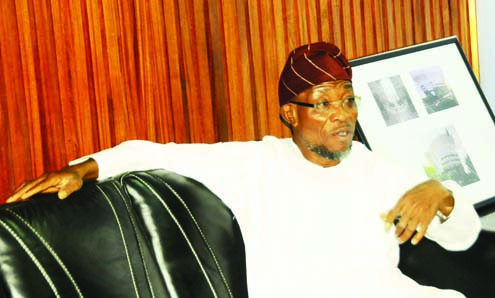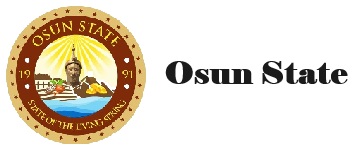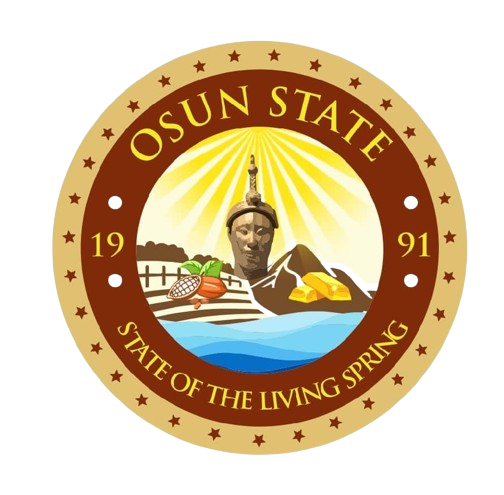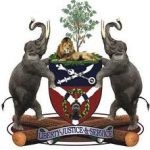
OPINION: Anatomy Of The Osun Education Reforms
Critics are finally admitting that the school reforms system of the Aregbesola administration has potential for enormous benefits

Over the last few weeks, the State of Osun has been among the headlines, on account of the febrile debates that have developed around Governor Rauf Aregbesola’s educational reforms. So fevered were the debates that they gave an impression that the state was inches away from combustion.
Parties involved, propelled by the always toxic combination of politics, religion and self-interest, studiously avoided considering the merits of the reforms as well as the fact the government had advertised its intention to conduct a reconstructive surgery on the sector since 2011.
Back then, Aregbesola, who assumed office in November 2010, discovered that the education sector in the state was gravely diseased and required the attention of intensive care specialists. Osun, it was discovered, was miles behind other states in the southwest geo-political zone in the percentage of secondary school pupils that recorded credit passes in five subjects, including English Language and Mathematics.
Another symptom was that less than three per cent of secondary school leavers met university admission requirements. Stung by the squalid situation, Aregbesola convoked an education summit in February 2011. Under the headship of Professor Wole Soyinka, the summit brought together accomplished scholars and educationists, who looked at the most successful models around the world to fashion a cure for the ailing sector in the state.
The outcome of the summit helped Aregbesola to conceive a policy that prescribed a wholesale reform of education at the primary and secondary levels. “I do not come to terms easily with the philosophy that funds should only be pumped to the university…If you have basic education that is in doldrums and you have no provision to improve it while you focus on tertiary education, who will attend the university?” Aregbesola asked in an interview with this magazine in June last year.
 As he had said at the end of the education summit, Aregbesola, in the same interview, reiterated his government’s desire to apply the scalpel to education in the state. “We are changing from the traditional primary, junior secondary, senior secondary to elementary, middle school, then high school.
As he had said at the end of the education summit, Aregbesola, in the same interview, reiterated his government’s desire to apply the scalpel to education in the state. “We are changing from the traditional primary, junior secondary, senior secondary to elementary, middle school, then high school.
Then, you leave to a world of your own, where you want to assess and evaluate your own autonomy and emphasise your independence,” he said. The sole target of the policy, the governor explained, is arriving at the most functional and cost-effective ways to deliver education to school children as well as designing effective monitoring and control of the process. “The school buildings are already collapsing.
We have no option but to clear the debris and weak structures to build functional infrastructure for education. I intend to build within the next 24 months, 20 high schools. Each will have a capacity of 3000 pupils and 50 middle schools, each will have a capacity for 900 pupils. I will also build 100 elementary schools with a thousand capacity in urban centres and as low as 50 in the very rural community areas. It will not be limited to infrastructure. We also want to assess our teachers and prepare them in terms of giving the students the best guidance,” Aregbesola explained.
Grand dreams are known to evaporate without money. In view of the hefty initial outlay required to give the policy life, Aregbesola opted for an incremental approach. This began with the provision of exercise books for all public school children, with textbooks and customised tablets (Opon Imo), respectively provided for primary and secondary pupils. This was followed by punctual payment of running grants to primary and secondary schools. The government also paid in full fees for the West African Examinations Council for all eligible children in public secondary schools. To discourage truancy, a 90 per cent attendance rule was imposed. To make school attractive to vulnerable kids, the government started providing free meals for pupils in elementary classes one to four.
Alongside these alterations began the remodelling of schools to accommodate modern classrooms, administrative blocks, library and computer facilities as well as adequate playgrounds. The ongoing construction of 100 primary schools, 50 middle schools, and 20 high schools around the state is the product of Aregbesola’s remodelling initiative. With each school complex conceived to hold about a thousand pupils in the same age group, there arose a need for physical realignment. This, in turn, resulted in the reclassification of primary and secondary schools, which yielded a couple of major changes. The first is the regrouping of classes, while the other is fusion of schools in a few urban centres.
In furtherance of the government’s desire to ditch what Aregbesola described as the “not quite creative and child-motivating format”, primary and secondary school classes have been reclassified Elementary School (Grades 1-4); Middle School (Grades 5-9); and High School (Grades 10-12).

The reclassification exercise, despite its objective being explained well beforehand, was gleefully seized on in some quarters in the state to kick off a storm.
Like cockroaches when the light is turned off, critics came out, leveling a variety of allegations. For one, they seized on the new nomenclature (Middle and High) to charge that Aregbesola’s government had introduced an education policy different from the national one. Others came with criticisms that had religious complexion.
A group of Christians in the state, for example, protested the new co-educational status of their schools as well as the use of hijab (the Muslim headdress) by Muslim students distributed to their schools. Leading the Christian agitation was state chapter of the Christian Association of Nigeria, CAN, which accused the governor of inviting a religious crisis by allowing the use of the hijab in public schools. The Muslim riposte to the Christian protest was to head to court to seek an order compelling Aregbesola to allow the use of hijab in public schools. CAN, again, responded by requesting to be joined as co-defendants with Aregbesola’s government in the suit the Muslims filed for the affirmation of their women’s right to wear the hijab in public schools.
Aside from their rejection of the hijab, Christians also demanded a preservation of the Christian origins of their schools as well as their long-held identities. This is in spite of the fact that the government take-over of such schools in 1978, the control of funding, staffing, management and supervision went to the government. The Christian position also ignored the fact that mixed Christian schools already exist across the state. Predictably, opposition political parties, led by the Peoples Democratic Party, PDP, sunk their teeth in.
They ignored the fact that reforms similar to those Aregbesola has initiated are taking place is some of the world’s most developed countries. In Philadephia, United States of America, the Philadelphia School District recently closed 24 schools and merged others on account of dipping academic performances and lean resources. This was done to ensure that education is provided in a cost-effective manner, schools efficiently managed and supervised to ensure a rise in standards. Also in Georgia, eight public colleges were fused to make four.
In between the religious and the politically motivated crowd of critics are prominent Osun indigenes, including traditional rulers and clergymen, who have been supportive of the reforms and have been arguing that public interest must supersede self interest and sectarian identity.
The Ooni of Ife, Oba Okunade Sijuwade, compared Aregbesola’s education reforms to the innovative one of the late Chief Obafemi Awolowo. “Your programme too will succeed like that of Obafemi Awolowo. When Awolowo started the reform, people antagonised him. They said the programme would not succeed. But before our very eyes, Awo’s education programme succeeded. We still can see many of the products of that reform till today,” the foremost traditional ruler said.

Support also came from Pastor S.K. Abiara, General Evangelist of the Christ Apostolic Church Worldwide, who advised Christians to trust Aregbesola’s handling of the affairs of the state. “I want to appeal to Christians in the state to be patient with the government. If one wants to be fair, Aregbesola means well for our children. When I saw the Opon-Imo, I was amazed because the tablet is a school on its own,” he said.
Even CAN, which has carried the Christian protest banner, now appears to be on the road to conviction to the merits of the reform agenda.
On 19 October, a meeting between the body and the state government in Osogbo yielded bold hints that the message has sunk better.
At the parley, the intentions of the government were, again, enunciated. This time, it met with some understanding.
State chairman of CAN, Mr. Elisha Ogundiya, told the meeting that the group is now better informed and will cooperate with the government to ensure the success of the reforms.
—Bamidele Johnson
OSUN DEFENDER


